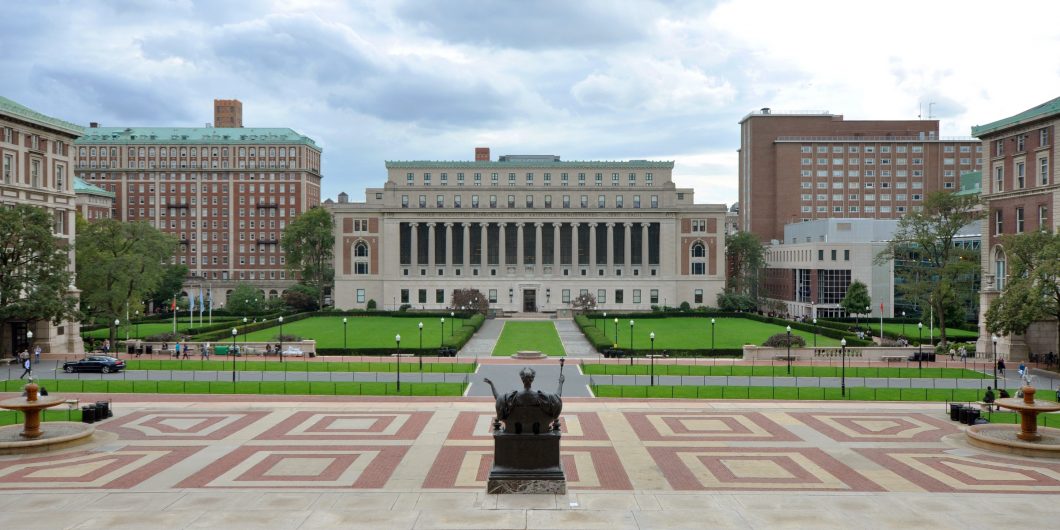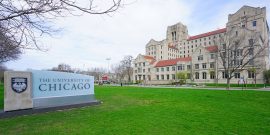No Place to Teach
Life in the professoriate is commonly defined by one’s publications or, if one climbs the administrative ladder, securing a position as chair or dean. But what is most important in this profession is often most neglected: teaching students. This is especially true at elite universities where teaching awards for excellence are viewed with suspicion. Real work is thought to involve applying for grants and publishing peer-reviewed articles rather than spending time on course design, grading papers, and meeting students.
When did this shift occur and where did it come from? Surprisingly, a book written during World War II explained why this would take place. Jacques Barzun’s Teacher in America, published in 1944 and reissued by Liberty Fund in 1981, speaks about his own personal experience of teaching as a Professor of History at Columbia University, illustrating the triumphs of good teaching and the failures of poor instruction. In reading his account, what we discover is that teaching is a communal activity and its success turns on people, processes, and institutions beyond any one person’s control.
For Barzun, the primary purpose of the professor is to educate his or her students and cultivate “the lifelong discipline of the individual . . . encouraged by a reasonable opportunity to lead a good life” that is “synonymous with civilization”. For the aim of good teaching is to turn the student into an “independent, self-propelling creature who cannot merely learn but study – that is, work, as his own boss to the limits of his powers”. However, for Barzun, teaching is not only to transform students into—to use today’s educational jargon—“independent and critical thinkers” but also to impart knowledge of one’s civilization to the student. This account of education differs from “schooling,” which for Barzun involves the mastery of a set of pregiven material for the pursuit of utilitarian careers, such as engineers and scientists. Professors instead should see themselves as part of a tradition to cultivate the character and mind of their students.
While Barzun ultimately concedes the mysteriousness of how true education happens between the teacher and students, he does offer suggestions about how to make this possible. First, Barzun echoes Aquinas’ observation that students not only listen to the words of the teacher but also pay attention to the way he or she lives out what he or she teaches. The teacher must be of good character, as inevitably he or she serves as an exemplar for students. Second, the teacher must be patient when observing the progress—or lack thereof—in his or her students, recognizing that education is a lifelong pursuit where the teacher’s role is to lead students onto the path of learning. Third, the teacher must demonstrate prudence in his or her dealing with students, adjusting to ever-changing learning situations to steer students towards knowledge and independence. This in turn requires the ability to listen and attend to another’s mind, leading the teacher from focusing on just themselves to the subject matter and student at hand (62). It is the recognition that the teacher, while having a critical and leading role, is only one part in the activity of teaching where he or she participates in a community of learning.
In terms of “modes of instructional delivery,” Barzun cites the lecture, the discussion group, and the tutorial hour as the main methods of teaching. The lecture is when a silent class is addressed by the professor, and eloquence, personality, and theater-like drama is needed to be effective and memorable. The discussion group comprises from five to no more than thirty students who ask and answer topical questions organized by the teacher. The professor must be willing to be sidetracked in the conversation, but also able to pull it back to the main topic and “correct without wounding, contradict without discouraging, coax along without coddling.” Interestingly, Barzun recommends that all introductory courses should be taught like this because “only in a small group can the student learn to marshal his thoughts, expose his weakness, argue out his beliefs, and gain that familiarity with the ‘ropes” of a given subject which, if not learned early, will never be learned at all”. Finally, the tutorial is between the professor and the student (or no more than three or four) which is a free-for-all conversation and presupposes knowledgeable students. Although simpler than the lecture or discussion group, the tutorial is more demanding because the professor must continually find new questions and topics, especially when the student knows the subject well (55-57).
Barzun recounts the universities’ transition from a humanities and language based curriculum to one revolving around science, where the establishment of the bachelor of science guarantees the holder “does not know any Latin.” Barzun’s objections are not about science per se but its elevation above all other disciplines and its being taught in an ahistorical manner that produces technicians instead of democratic citizens. Science instead should be learnt in a historical context and presented as one perspective of knowledge among many, including “art, philosophy, religion, and common sense.” Such an approach, according to Barzun, would illuminate how these disciplines complement rather than compete in the education of students.
Besides its rivalry with science, the humanities and languages also suffer from internal weaknesses. History has been replaced by the social sciences to show students how to think about the present moment rather than expanding their intellectual horizons by reaching back into the past; art is preoccupied with rules and numbers so students can appreciate it instead of revealing its meaning, beauty, and transcendence; foreign languages are learnt for utilitarian reasons in place of knowing how other cultures understand the world; and the great books are perceived as a relic of the past rather participating in the common stories, beliefs, and tales of one’s civilization.
What is remarkable about Teacher in America is how little has changed since the 1940s: science has rebranded itself as STEM and is preeminent in the university; the humanities have practically collapsed under the weight of postmodernism; scholarship remains valued over teaching; academic freedom is under assault; and the bureaucratization of the university continues unabated.
In addition to curriculum challenges, Barzun describes institutional obstacles to his ideas of teaching, such as universities not being held accountable by the public in what they teach, the difficulty of hiring good teachers, the rise of “proficiency” and standardized examinations, and the specialization of knowledge, particularly in the sciences, where students neglect the humanities and languages. Other problems include the relationship between deans and faculty, the multiplication of faculty committee commitments, and encroachments on faculty’s academic freedom.
But what is most threatening to teaching for Barzun is the proliferation and esteem given to the Ph.D., a credential defined by scholarship rather than teaching. The incentive structure of scholarship first tends to produce works of negligible quality, and, more importantly, deprive students of the “enthusiasm, freshness, and vigor” that young faculty can give in the classroom “in default of ripe wisdom.” Barzun goes as far as advocating that faculty salaries should go to those who teach rather than conduct research.
While Barzun’s advice that “it is not good for a teacher to associate steadily with students” is even more relevant in the age of Title IX, his comments about female students—“it is true that as a general rule, girls are less interested than boys in theory, in ideas, in the logic of things and events”—are suspect and reflect the limitations of the period. In spite of this, Barzun concedes that the democratization of education is likely to continue in America with the spread of public lectures, adult education, and university extension programs. However, he hopes that this democratization does not reach the universities, because he sees their more selective admissions processes as part of what makes true education possible.
This hope was not realized, as Barzun writes in the 1980 preface. A flood of new students having entered the university with the G.I. Bill and National Defense Education Act. Furthermore, the value of teaching continued to decline with funding being poured into research by the federal government and large foundations on account of its perceived social utility. The wave of government regulations promoting women and minorities in reaction to the student riots of the 1960s transformed the university into a vast bureaucracy. And the overproduction of Ph.D. students and the failing financial health of universities only further narrowed the opportunities for professors to teach.
What is remarkable about Teacher in America is how little has changed since the 1940s: science has rebranded itself as STEM (science, technology, engineering, and mathematics) and is preeminent in the university; the humanities have practically collapsed under the weight of postmodernism; scholarship remains valued over teaching; academic freedom is under assault; and the bureaucratization of the university continues unabated. If anything, the situation may have only gotten worse with online technologies substituting for the lecture, discussion group, or tutorial; the lowering or abolishment of academic admissions standards; and a technocratic and therapeutic view of teaching that has replaced any normative or liberally educated account.
Yet Barzun offers a vision of why one should teach that is both hopeful and realistic. As he warns, anyone who intends to teach should give up any hope to receive “recognition” in a democratic society that defines success materially. But to teach well is to partake in an enterprise that transcends oneself and joins a community with students and those who have gone before us, binding ourselves to the past and thereby sharing in our civilization. Teaching well means being free in the highest sense from practical and political concerns and compels us to ask the fundamental questions of what it means to be human. To do this—and to do this well—is no small task, but it reaps the enrichment of lives for students and teachers alike.



